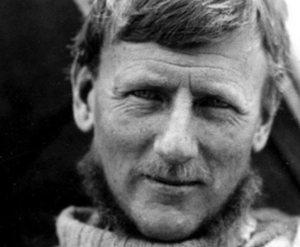Frank Smythe facts for kids
Quick facts for kids
Francis Sydney Smythe
|
|
|---|---|
 |
|
| Born | 6 July 1900 |
| Died | 27 June 1949 (aged 48) London
|
| Occupation | botanist, explorer, mountaineer photographer, writer |
Francis Sydney Smythe, often called Frank Smythe, was an amazing English mountaineer, writer, photographer, and botanist. He is famous for his climbs in the Alps and the Himalayas. In the Himalayas, he found a special place he named the "Valley of Flowers", which is now a protected park. He made new climbing paths on Mont Blanc and was the first to climb Kamet. He also tried to climb Kangchenjunga and Mount Everest in the 1930s.
About Frank Smythe
Frank Smythe was born in Maidstone, Kent, in 1900. He went to school in Switzerland. He first trained as an electrical engineer and worked for a short time with the Royal Air Force and Kodak. But soon, he decided to spend his time writing books and giving talks to people.
Frank loved climbing mountains, taking pictures, collecting plants, and gardening. He traveled a lot to give lectures about his adventures. He wrote many popular books, a total of twenty-seven! His book The Kangchenjunga Adventure made him a well-known and respected author.
During World War II, he helped train soldiers in the Canadian Rockies. He taught them how to climb mountains. He also led a special training center in Scotland. He wrote two books about climbing in the Rockies: Rocky Mountains (1948) and Climbs in the Canadian Rockies (1951). A mountain in Canada, Mount Smythe, was named after him.
In 1949, Frank Smythe became unwell while traveling. He passed away on June 27, 1949, when he was 48 years old.
Frank Smythe's Mountain Adventures
Frank Smythe was part of many important climbing expeditions. Here are some of his biggest achievements:
- 1927 and 1928: Frank Smythe and T. Graham Brown were the first to climb two new paths on the Brenva Face of Mont Blanc. These paths were called the Sentinelle Rouge and Route Major.
- 1930: Smythe joined an international team trying to climb Kangchenjunga.
- 1931: Smythe led the first successful team to climb Kamet (7,756 meters). At that time, it was the highest mountain ever climbed! During this trip, Smythe and R. L. Holdsworth found a beautiful place in the Himalaya. They called it the Valley of Flowers. It is now a famous park in India.
- 1933: Smythe was part of the Everest expedition led by Hugh Ruttledge.
- 1936: He was again part of Hugh Ruttledge's second Everest Expedition.
- 1938: Smythe was on the Mount Everest expedition led by Bill Tilman.
Images for kids


